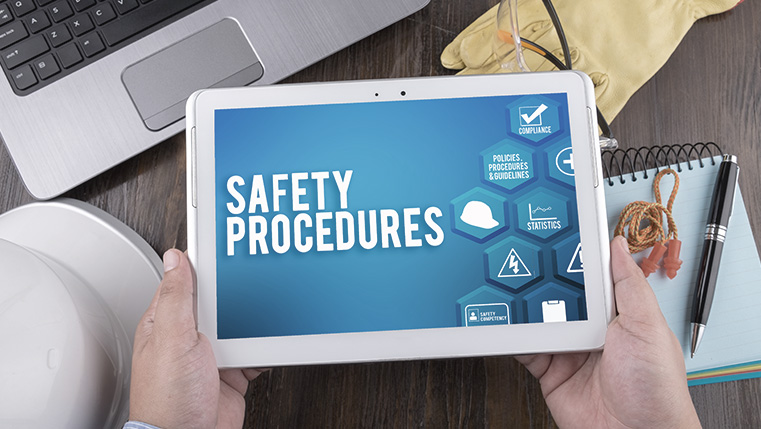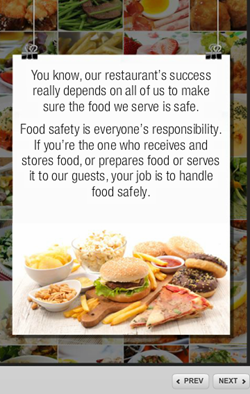How Microlearning Can Facilitate Effective Delivery of Safety Training

When we think of safety training, what is the picture that comes to mind? Employees reading bulky safety manuals or attending one-off training sessions on safety where they forget half the content once they are out of the venue. These ways of delivering safety training, which reduce training to a one-time event when it should actually be an ongoing process, are ineffective. Though organizations are aware that inadequate safety training may lead to accidents or worse, cause damage to life and property, they fail to create impactful safety training that will bring the desired results and also meet compliance requirements. Thankfully, there are many options available today that can make safety training effective and interesting to employees. Microlearning is one such option. Let’s find how.
Wondering What Microlearning Formats to Use for Safety Training?
Here’s what you can try:
- Digital flashcards
- Flipbooks
- Games
Read on to explore more…
Why Microlearning Appeals to Learners?
Microlearning is appealing to learners owing to its features. Here are a few important ones:
- Short learning modules with a single learning objective
- Delivered in various formats
- Includes learner interaction in the form of short quizzes or follow-up with instructors
- Accessible on various devices – desktops, laptops, smartphones, and tablets
- Can be offered for standalone topics or as part of a series
- Can be delivered just-in-time and just enough to be relevant
- Promotes learner autonomy – employees can access them based on their needs
These are some reasons microlearning appeals to learners and for organizations, it meets an important objective of safety training – helping employees know what to do and what not to do when it comes to safety aspects.
→ Download eBook: Where Does Microlearning Fit in Your Learning Strategy
How Microlearning Can Bolster Safety Training
The usual approach to safety training – delivering a safety talk or handing out job-aids does not meet an important need; helping employees remember the rules through reinforcement. This can be best done by aiding reflection and knowledge retrieval with spaced repetition or practice that can effectively enhance memory.
Forms of Microlearning: There are numerous formats of microlearning that can effectively meet this need. These include animations, GIFs, interactive resources, infographics, simulations, e-books, quizzes, audio, mobile apps, games, and digital flashcards. The choice of microlearning asset should be based on the function or objective of your course.
Form and Function: Essentially, form should follow function in microlearning. Let us illustrate this with an example; one of our clients, a catering services provider operating a chain of restaurants in North America wanted to train its workforce on basic food safety practices. The company wanted an online learning solution that would appeal to its target audience which consisted of young, fresh graduates.

The client wanted a microlearning course that would be upbeat; be short and quick and hold their attention through images and audio and with less of onscreen text. The client had these specific requirements for the course:
- Catchy to hold learners’ attention
- Small so that it could be completed quickly
- Accessible on smartphones and tablets
To meet these objectives (functions), we decided to use a trivia game as the instructional strategy. Each topic was made into a game with a set of questions the learner had to answer correctly to score points.
These games were between 5-15 minutes long and could be accessed by learners on their mobile devices. This made it easy for them to access the course during some downtime at work or while commuting. The use of the trivia game for this course provided an interactive experience to the learners, which helped them learn what to do and what not to do to maintain food safety and apply it at work.
How Microlearning Can be Used in the Overall Learning Strategy for Effective Safety Training
The different forms of microlearning are flexible enough to be used in an overall learning strategy and empower your learners. Here is a sample scenario of how it can be used in a safety training course.
- Digital flashcards (microlearning) can be used to help learners review information which can then be tested with a scored quiz.
- This can be followed by hands-on training given by an instructor on safety procedures.
- After this, flipbooks (microlearning) can be delivered to learners to help them recall the key points.
- This can be followed by hands-on assessments to test their knowledge.
- Games (microlearning) can be used for reinforcement, followed by refresher or reinforcement through ongoing coaching.
Parting Thoughts!
Microlearning is an ideal solution for safety training. It will work well, provided the forms of microlearning are selected based on the function or objectives of the course. Hope this blog provided you with actionable insights on how to leverage microlearning for safety training. Not only safety training, but microlearning can also be leveraged for training your sales team. Eager to know how? Download this eBook to get answers to your questions.
Editor’s note: This post was originally published in 2018 and has been updated for comprehensiveness.




![How to Design Effective Safety Training Programs with Rapid eLearning [Infographic]](https://blog.commlabindia.com/hubfs/blogs/rapid-elearning-safety-training-infographic.jpg)